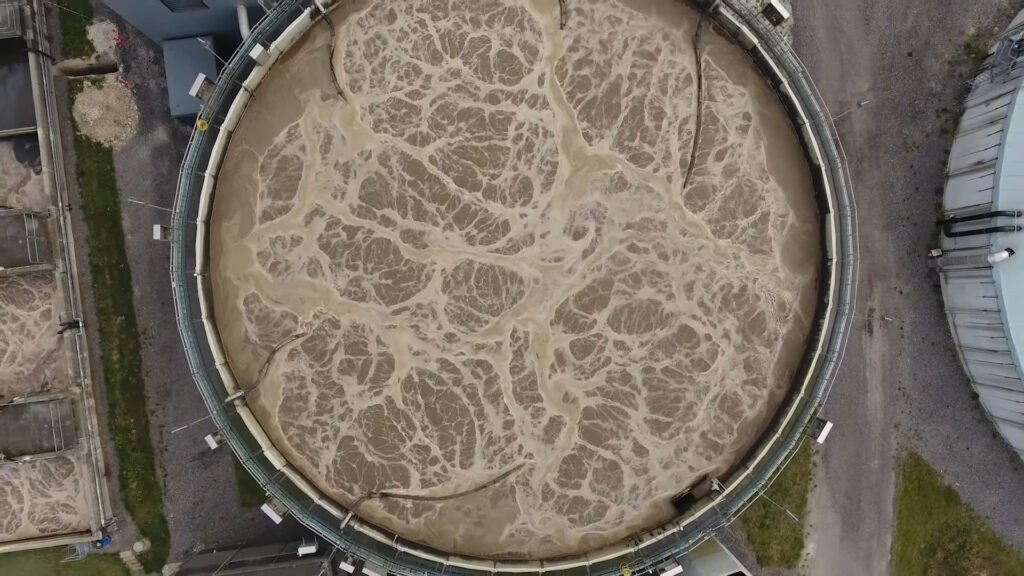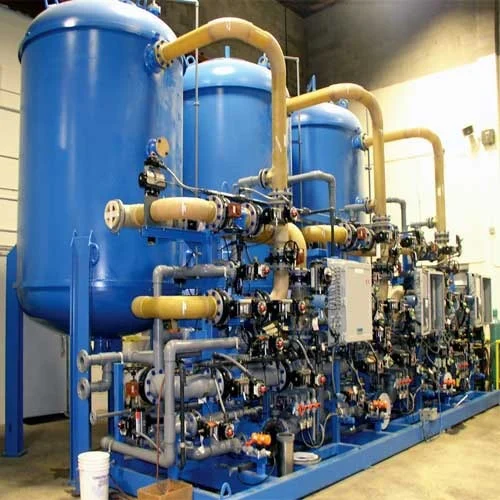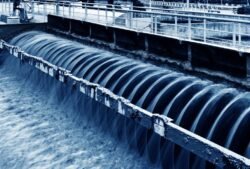Biological Treatment in Wastewater: Harnessing Microorganisms for Clean Water Solutions

Biological treatment in wastewater management is a process that mimics the natural purification mechanisms found in the environment. It involves using microorganisms, such as bacteria and protozoa, to break down organic matter in sewage or industrial effluents. This method is favored for its efficiency in reducing the load of pollutants and its role in the recovery of valuable byproducts such as biogas.
Technological advancements have enhanced traditional biological treatment methods, allowing for more sophisticated processes like aerobic and anaerobic treatment, membrane bioreactors, and integrating natural systems. These biological approaches are essential in the move towards sustainable wastewater management, reducing the environmental footprint of waste disposal and adhering to increasingly strict regulatory standards regarding effluent quality.
Key Takeaways
- Biological treatment effectively reduces pollutants through microbial digestion.
- Technological innovations enhance traditional biological treatment methods.
- Advanced biological systems support sustainable wastewater management.
Fundamentals of Wastewater Treatment
In the realm of wastewater management, the biological treatment process is integral to the purification of water. It harnesses the power of microorganisms to decompose organic matter and nutrients.
Biological Treatment Overview
Biological treatment of wastewater is a process that utilizes various types of microorganisms, which metabolize the organic waste material present in the water. Aerobic biological treatment involves the presence of oxygen and is characterized by the use of aerobic microbes that break down pollutants. This can be achieved through activated sludge systems, trickling filters, and rotating biological contactors.
Conversely, anaerobic biological wastewater treatment occurs in the absence of oxygen. It is commonly employed for the treatment of high-strength wastewater and sludge digestion. Anaerobic processes, like anaerobic digestion and up-flow anaerobic sludge blanket (UASB) reactors, reduce the organic load and generate biogas as a byproduct.
There is a diversity of biological treatment methods for wastewater that can be tailored according to the specific needs of a treatment facility. In addition to aerobic and anaerobic treatments, there are other systems, such as types of biological wastewater treatment, including hybrid systems that utilize both aerobic and anaerobic processes sequentially.
The comprehensive wastewater treatment physical, chemical, and biological process is designed to remove many contaminants. While physical processes focus on the removal of solids and preliminary treatment, biological treatment targets organic and nitrogenous compounds, and chemical treatment is employed for disinfection and removing phosphates, among other pollutants. Each step is crucial in producing water that meets environmental discharge standards or is safe for reuse.
Aerobic Treatment Technologies
Aerobic treatment technologies are essential for removing soluble organic compounds in domestic and industrial wastewater. They achieve this through biological processes that require oxygen, resulting in high-quality effluent suitable for discharge or further treatment.
Activated Sludge Process
The Activated Sludge Process is a widely implemented aerobic treatment method for wastewater management. It involves cultivating a complex biomass called activated sludge, which absorbs and digests organic pollutants. The process typically includes stages of aeration and settling, where the treated wastewater is separated from the biomass. This method is highly effective for treating large volumes of sewage, ensuring that most organic matter is removed before effluent discharge.
Rotating Biological Contactors
Rotating Biological Contactors (RBCs) consist of closely spaced, rotating discs partially submerged in wastewater. These discs are coated with microorganisms that degrade pollutants as the rotation exposes them to sewage and air. RBCs are known for their reliability and simple operation, making them a preferred choice for smaller communities or individual establishments needing consistent wastewater treatment.
Trickling Filters
Trickling Filters are another established technology in which wastewater is passed over a bed of porous media, such as stones or plastic, on which a biofilm of microorganisms develops. As the wastewater trickles down, it comes into contact with the biofilm, which consumes the organic material. Trickling filters are particularly valued for their durability and ability to handle fluctuations in wastewater composition and flow rates.
Sequencing Batch Reactors
Sequencing Batch Reactors (SBRs) treat wastewater in batches using a simple fill-and-draw principle, where aeration and sedimentation occur in the same tank but at different times. The flexibility of the SBR cycle allows it to efficiently manage variations in wastewater load and composition, thereby providing a versatile and robust treatment option.
Each of these technologies plays a critical role in modern wastewater treatment systems, offering solutions that cater to varied needs from slight to large-scale applications.
Anaerobic Treatment Approaches
The anaerobic treatment represents a crucial method for the biological treatment of industrial wastewater, where microorganisms break down organic matter without oxygen. This process provides energy-efficient options without the high costs associated with aeration in aerobic systems.
Anaerobic Digestion
Anaerobic digestion is a controlled biological process where microorganisms decompose organic matter, producing biogas and digestate. The process occurs without oxygen and is widely used for treating industrial wastewater. Through various stages, including hydrolysis, acidogenesis, acetogenesis, and methanogenesis, complex organic compounds are broken down into simpler substances, eventually resulting in methane and carbon dioxide.
Benefits of anaerobic digestion include energy conservation and biogas production, which can be used as a renewable energy source. Correct pH level and temperature maintenance are crucial to ensure optimal digestion rates and effective treatment outcomes.
Upflow Anaerobic Sludge Blanket
The Upflow Anaerobic Sludge Blanket (UASB) reactor is a form of anaerobic treatment in which wastewater flows upward through a sludge blanket comprised of microbial granules. The granules are dense, compact biofilms with a high biomass concentration, making the UASB reactor especially effective for treating industrial wastewater with high concentrations of organic pollutants.
An advantage of the UASB reactor is its compact design, which allows for a smaller footprint compared to other treatment systems. It carries out the same biological process as anaerobic digestion. Still, it is often designed to cope with higher loads of wastewater, thus reducing the need for ample space and contributing to lower operational costs.
Membrane Technologies
In wastewater treatment, membrane technologies have become pivotal due to their ability to efficiently filter and purify effluent.
Membrane Bioreactors
Membrane bioreactors (MBR) are at the forefront of modern wastewater treatment solutions. They combine conventional biological treatment processes with membrane filtration to deliver high-quality effluent. MBRs function by utilizing semi-permeable membranes, which selectively separate solids and microorganisms from the treated water.
Key Benefits:
- High-Quality Effluent: MBRs are known for producing effluent of exceptional quality, often exceeding regulatory standards.
- Compact Footprint: Due to their efficient design, MBR systems require less space than traditional wastewater treatment setups.
A typical MBR setup involves aeration tanks, wherein microorganisms break down pollutants, followed by a membrane filtration unit. The crucial separation occurs in the membrane unit, typically employing microfiltration or ultrafiltration membranes. These membranes have pore sizes capable of filtering out solid particles, bacteria, and viruses, ensuring a high level of purification.
One significant advantage that MBRs bring to the table, apart from their reduced spatial requirement, is the cost efficiency in operation. Over time, the energy and maintenance costs are lower, and the processed water quality allows for various reuse applications, as indicated by research from the University of Michigan on wastewater treatment.
The membrane material and pore size heavily influence the longevity and performance of an MBR system. These factors determine the system’s ability to handle different types and volumes of wastewater, making membrane selection a crucial aspect of the design process. The membranes require periodic cleaning, generally through backwashing or chemical cleans, to maintain optimal functionality and reduce fouling.
In summary, membrane bioreactors represent a convergence of biological treatment and advanced filtration, addressing both spatial constraints and the need for high-efficiency wastewater purification. Their growing adoption is a testament to their role in modern environmental management strategies.
Natural Treatment Systems
Natural treatment systems leverage ecological processes involving plants, soil, and microorganisms to treat wastewater in an effective and sustainable way. They’re engineered to mimic the purification processes that occur in natural environments.
Constructed Wetlands
Constructed wetlands are engineered systems that simulate the water purification functions of natural wetlands. In these systems, wastewater flows through a medium—gravel or soil—planted with wetland vegetation. These plants play a crucial role by providing a habitat for microorganisms that degrade contaminants. Water is treated as it passes through the root zone, undergoing natural processes such as sedimentation, absorption, and microbial decomposition. There are two primary types of constructed wetlands:
- Subsurface Flow Wetlands: These wetlands feature a flow of wastewater below the surface to prevent environmental exposure and minimize the risk of odors and mosquito breeding.
- Surface Flow Wetlands: Water flows above ground, mimicking natural wetlands more closely. This type allows more significant interaction between water, plants, and atmospheric oxygen.
Lagoons
Lagoons are large, pond-like bodies of water where wastewater is stored and slowly treated through natural biological processes. They are particularly suitable for rural and small communities due to their simplicity and cost-effectiveness. There are several types of lagoons, including:
- Aerated Lagoons: They utilize artificial aeration to introduce oxygen into the wastewater, thereby accelerating the treatment process.
- Anaerobic Lagoons: Designed for environments with less oxygen, allowing wastewater treatment through anaerobic processes.
- Facultative Lagoons combine aerobic and anaerobic processes; the top layer is oxygenated, and the bottom layer is anaerobic.
Lagoons are designed to maximize retention time, ensuring adequate treatment before the water is discharged or reused. They require a considerable land area and depend on climatic conditions for optimal treatment efficiency.
Advanced Biological Treatment Configurations
In the realm of wastewater treatment, advanced biological treatment configurations are integral for enhancing the quality of effluent. They often achieve higher removal rates of contaminants through various complex designs.
Hybrid Biological Systems
Hybrid biological systems are notable for integrating different biological treatment processes within a single biological reactor, offering improved performance and operational flexibility compared to conventional methods. Typically, these systems combine attached and suspended growth processes, optimizing the advantages of both approaches within the biological wastewater treatment system.
Key Features of Hybrid Biological Systems:
- Enhanced Contaminant Removal: By leveraging attached and suspended growth models, hybrid systems achieve high efficiency in removing organic and inorganic pollutants from wastewater.
- Operational Flexibility: Operators can adjust conditions to favor the growth of either attached or suspended biomass, allowing for adaptability in the face of variable wastewater characteristics.
Design Considerations:
- Space Efficiency: Hybrid systems are particularly beneficial in facilities where space is at a premium, as they maximize treatment capacity per unit area.
- Aeration: Adequate aeration is crucial, as it influences the microorganisms’ metabolic rates and the treatment process’s overall efficacy.
Operators of a biological wastewater treatment system must monitor and manage these hybrid configurations to ensure optimal performance and compliance with effluent standards.
Operational Considerations
Effective management of biological treatment in wastewater systems requires careful attention to ensure optimal performance. Fine-tuning process variables and diligent maintenance can prevent potential issues before they escalate.
Process Optimization
In biological filter wastewater treatment, achieving process optimization is critical. One must monitor the hydraulic and organic loading rates to ensure the biofilm on the filter media functions efficiently. Overloading can lead to clogging and inefficiency in contaminant removal. Conversely, biological oxidation wastewater treatment processes need balanced aeration to promote aerobic microbial activity, which is essential for breaking down organic matter.
Regular performance evaluations enable operators to adjust airflow and nutrient supply, further optimizing the degradation process. Operators may utilize Moving Bed Biological Reactor (MBBR) technology, which incorporates plastic media that facilitates attached growth, optimizing the aeration and ensuring sufficient dissolved oxygen for treatments.
Maintenance and Troubleshooting
Maintenance of biological wastewater treatment systems requires routine inspection of mechanical components like pumps and blowers. These inspections help catch wear and tear early, thus avoiding unexpected breakdowns that can disrupt the treatment process.
In biological filters, it’s crucial to routinely remove trapped solids and monitor for channeling, where water bypasses the media. If channeling occurs, it can significantly reduce treatment efficiency. Resolving issues like foaming or inadequate sludge settling requires immediate attention for biological oxidation systems to prevent compromised effluent quality.
Operators should have established protocols for troubleshooting common issues, such as fluctuations in effluent quality or irregular biomass activity, to return the system to peak operating conditions swiftly.
Impact on Environment and Sustainability
The biological treatment of wastewater has significant implications for environmental health and sustainability. Leveraging microbial processes, these treatment systems aid in the reduction of pollutants and encourage resource conservation.
Resource Recovery
Biological wastewater treatment systems are pivotal in the recovery of valuable resources. They facilitate the extraction of nutrients such as nitrogen and phosphorus, essential for agricultural use. Additionally, the generation of biogas as a byproduct provides a renewable energy source, further enhancing sustainability.
Ecosystem Integration
Ecosystem integration represents a strategic approach in biological wastewater treatment aiming to achieve a low-impact symbiosis with natural environments. Systems that mimic natural wetlands contribute to biodiversity by providing habitats for various organisms while simultaneously purifying water. These methods highlight the potential for seamless interaction between human-engineered and natural processes, enhancing environmental protection.
Frequently Asked Questions
What are the various types of biological treatment processes for wastewater?
Biological wastewater treatment processes broadly fall into aerobic, anaerobic, and facultative treatment categories. Aerobic processes involve microorganisms that require oxygen to treat the wastewater, like activated sludge systems, while anaerobic processes do so without oxygen, such as in biogas digesters. Facultative systems can operate under both conditions.
What are the advantages of using biological treatment methods in wastewater management?
Biological treatment methods offer the advantage of effectively reducing organic pollutants and nutrients like nitrogen and phosphorus through natural processes. They tend to have lower energy requirements than chemical treatments and can be more sustainable due to the possibility of resource recovery, such as biogas production.
How do the physical, chemical, and biological wastewater treatment processes differ?
Physical processes in wastewater treatment focus on removing solids and particulate matter through screening or sedimentation. Chemical processes involve using chemicals to precipitate or neutralize pollutants, whereas biological processes leverage microorganisms to degrade organic matter and convert it to more stable forms.
Can you elaborate on the role of microorganisms in the biological treatment of wastewater?
Microorganisms are integral to biological wastewater treatment, breaking down organic contaminants. Depending on the process design, different species like bacteria, protozoa, and fungi are selected to metabolize waste products, ultimately leading to treated effluent and sludge that can be further processed or disposed of.
What factors influence the efficiency of biological treatment systems in wastewater treatment?
Factors influencing the efficiency of biological wastewater treatment include temperature, pH levels, retention time, the concentration of microorganisms, and toxic substances. Optimal conditions are crucial for microorganism activity and directly affect the system's effectiveness in removing contaminants.
How does biological treatment compare to other wastewater treatment technologies regarding cost and environmental impact?
Biological treatment methods are generally more cost-effective than advanced chemical or mechanical processes and have a lower carbon footprint. While initial infrastructure investment is required, their operational costs are often lower, making them an attractive, environmentally friendly option for long-term wastewater management.


